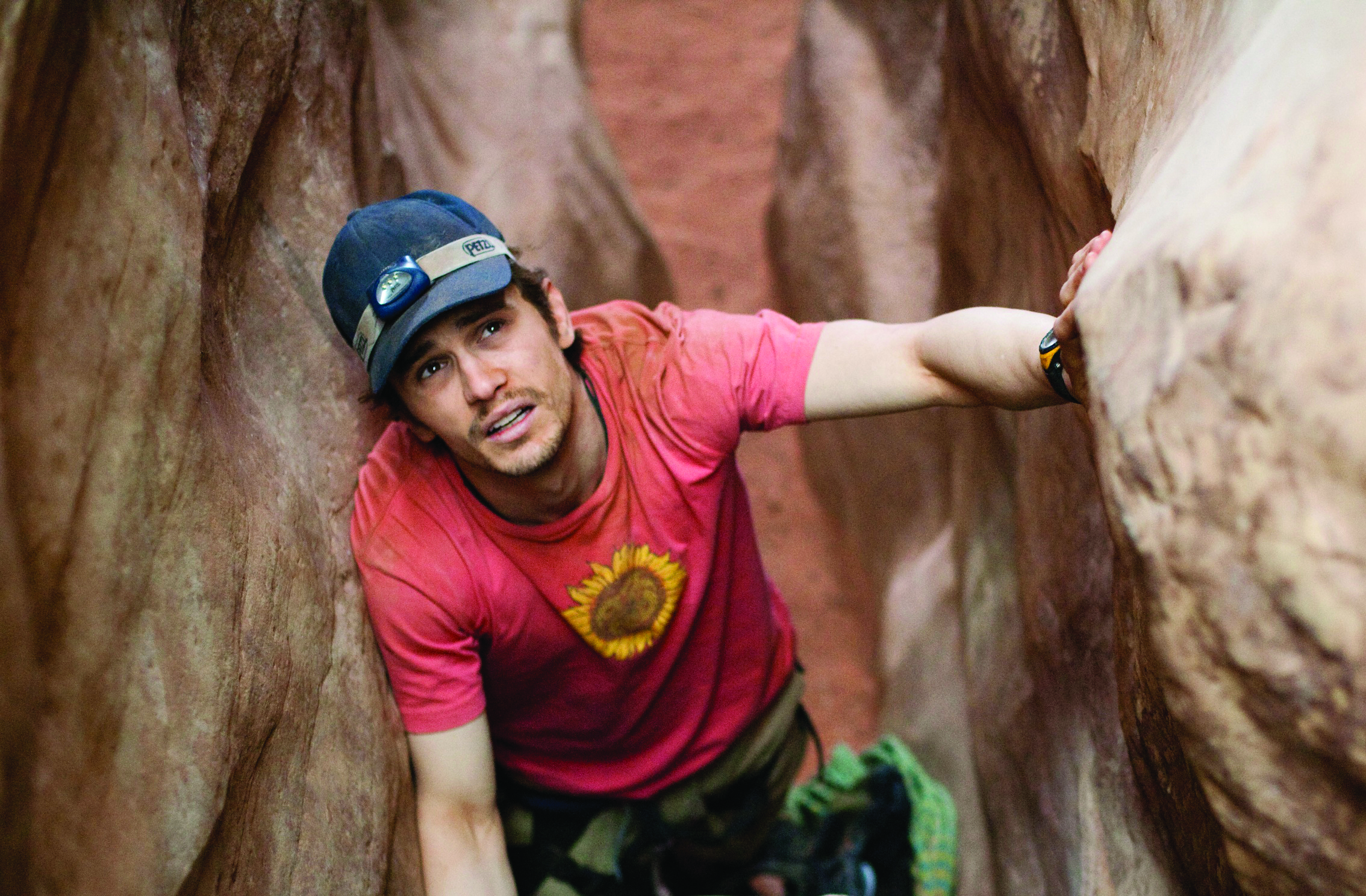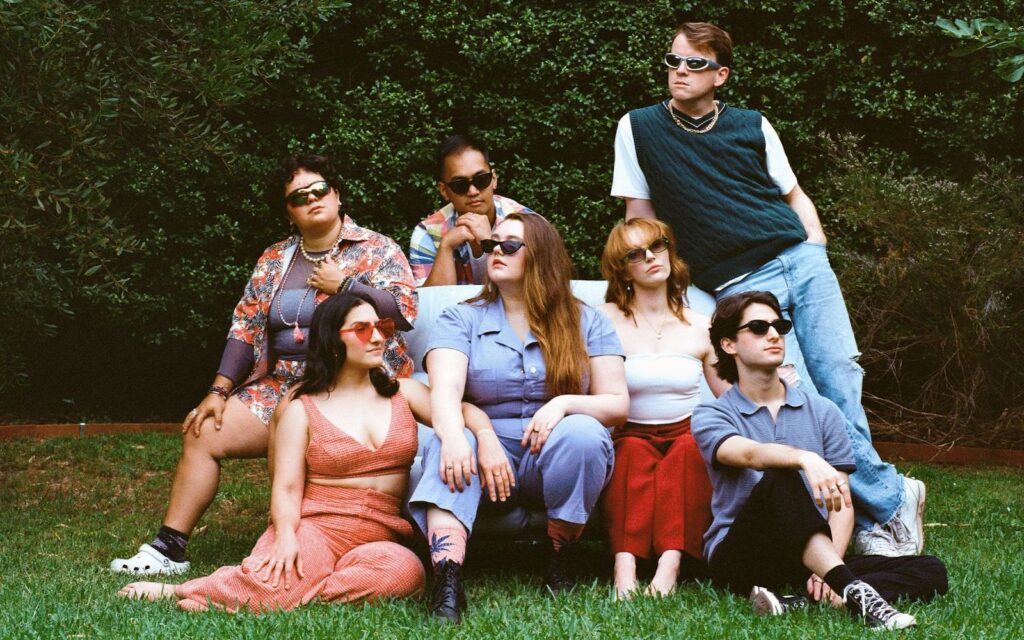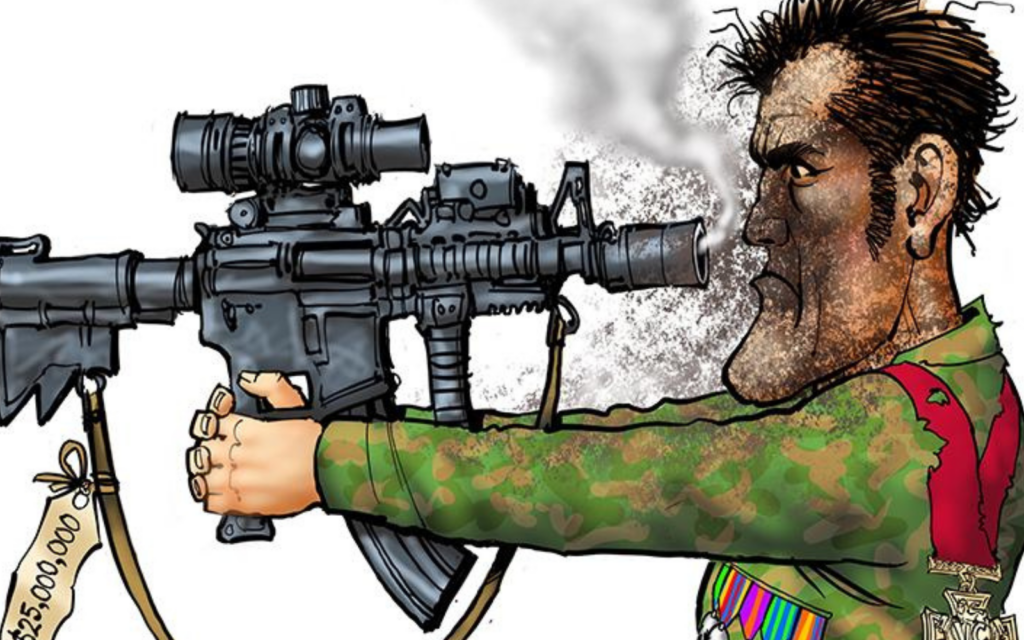When James Franco first watched 127 Hours , he sat one row behind Aron Ralston – the man he portrays on screen
When James Franco first watched 127 Hours , he sat one row behind Aron Ralston – the man he portrays on screen – and started to fret that he hadn’t done a good job. Indeed, Franco was convinced that the young adventurer would be disappointed with his performance.
Ralston, he says, spent much of the film whispering in his wife Jessica’s ear and Franco began to worry that he didn’t like what he was seeing. "The first time I watched it with an audience I sat behind Aron," he says. "He was sitting with his wife and all throughout the movie, he kept leaning over and whispering to her and I thought, ‘oh god, I guess he hates it!’
"It was like ‘what’s he saying?’ because I couldn’t see his face. I started to think maybe he’s thinking I didn’t do the part right. Then when the movie was over, I went up to Aron said ‘come on, man, tell me what you think? Was it OK?’
"And he said that from a quarter of the way through to the end, he had been crying the whole time. I guess he had leaned over to his wife and he was just telling her about the real experience, getting her support. So hopefully he likes it and obviously it’s a very emotional experience for him to watch the film."
It is indeed. Ralston’s inspirational story of survival against the odds is truly remarkable and Franco’s performance in Danny Boyle’s gripping, extraordinary film is quite brilliant – and that’s according to Ralston himself.
"James is so good that the first few times I watched it, was so real that I didn’t even think he was acting," says Ralston. "His response and his emotions are so realistic. I have to say that I think James did a phenomenal job with it and I’m really happy with what he does in the film."
In April 2003, Ralston, then 27, set out for a weekend hiking amidst the dramatic natural beauty of the Canyonlands National Park in Utah. He made a terrible mistake that would cost him dearly – he didn’t tell a soul where he was going.
He was climbing across Blue John Canyon when he slipped and as he did so, he knocked loose a large rock, which jammed his right arm tight against the sandstone cliff face. Ralston was trapped and he knew that no one was coming to rescue him.
Over the next five days as he tried every conceivable way to set himself free, Ralston became convinced that he would die in that lonely canyon and recorded poignant farewell messages for his family and friends on to his video camera. Those messages were invaluable in helping Franco build his performance.
"He made them over the course of the five days and we could see his physical deterioration in the videos," says the actor. "But in addition to that, it made me realize the power of the simplicity of his delivery.
"He’s not a giving Shakespearian death soliloquy; it’s not about what he’s saying, it’s the contrast of the knowledge of his own imminent death and just talking very intimately to his family – and that is what is so powerful.
"Also, the other valuable thing was that I spent days with Aron and Danny, must have spent weeks with him writing the script, and he would tell me the story.
"But the difference between talking to him in person and watching the videos is that on the videos Aron doesn’t know that he’s going to survive – so it’s pure behaviour because Aron doesn’t know there’s a happy ending.
Ralston admits that within an hour of becoming trapped, he began to contemplate the unthinkable – that he would have to amputate his own arm in order to get free.
He pushed it to the back of his mind but eventually, as his limited water supply ran out and fever began to ravage his body, he took drastic action – using his blunt, cheap multipurpose penknife to pierce the skin and using the very boulder that trapped him as a lever to break the bones in his forearm.
As Franco points out, when audiences watch 127 Hours they are confronted with one very pertinent question – just how far would you go in order to survive?
"The movie allows us to experience it with the character and then maybe question our own lives. I guess working on the movie reinforced my appreciation for having my family and my loved ones."
The scene itself has attracted much debate but for Franco it’s essential that audiences share that moment of release with the character, no matter how grisly it is.
"Some people have trouble with that scene and the unfortunate thing is that the more we talk about it, the more people talk about it, it builds it up in a certain way, so some people are now going to be disappointed when they get to that scene and it’s like, ‘oh that’s all it was?’
"Danny is very aware of the sensitive nature of this kind of scene but first and foremost, we have to be loyal to what Aron went through; we have to respect what he went through. It took him over 40 minutes to cut his own arm off an our scene is like three minutes.
A story about a man trapped in the wilderness, no matter how dramatic his escape, presents any filmmaker with a considerable challenge. Namely, how do you make five days of confinement cinematically interesting? Boyle brings his unique, dazzling style to the story with flashbacks and hallucinations and it becomes a fast paced visual feast, says Franco.
"Danny is so good at incorporating all the elements that make a great film. Once he’s edited and the music is in there and everything, he delivers a full experience," says Franco.
"I think another reason the movie feels so intense is not necessarily because of the amputation scene that a lot of people are focusing on; it’s because of the overall effect of the movie – the way that it’s shot.
"I thought about this before we did it because it’s a story told primarily through physical actions and all these little victories and failures, and if done right it brings an audience close to a character.
"He’s not telling you how Aron’s feeling, he’s showing you; he’s doing it and so the audience really gets on board with the character. And when the character does speak, it’s a very unconventional device where he’s talking directly to his video camera.
"That gives the character a justification to talk directly to the audience. Yes, he’s talking to his family and friends but he’s looking right into the lens as if he’s talking right to the audience – so it creates a very intense experience."
For Franco, the challenge of making 127 Hours was considerable – not least because he rarely had other actors to perform with. Mostly, he was alone in a canyon. But, he says, the whole creative team -Boyle, screenwriter Simon Beaufoy and the cinematographers – had to adapt to an unusual narrative structure. "I’m certainly happy with the way that Danny created his own very unique experience."
127 Hours is in cinemas from tomorrow, Thursday February 10.







